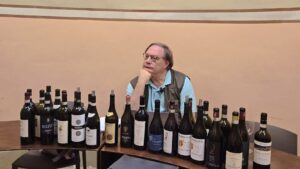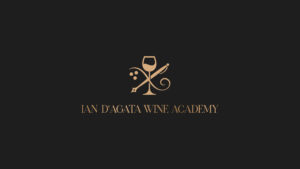I want to explore the possible role that developments in Artificial Intelligence (AI) may play in the creation of a group of wines based on the analysis that advanced AI can provide. (Do note that I prefer the term Neural-net Intelligence but that is another issue.)
Scientific analysis of wines from terroir investigation to the chemical make-up of wines has been going on for many years. Altering wines so that they produce scents, flavors and textures that flatter the senses has been happening in California for at least thirty years. But I am now considering another possibility altogether: Detailed chemical/organoleptic analysis of famous wines that would allow “wine creators” to make something like a clone of the 1986 Mouton Rothschild or the 1962 La Tache, for example—to give two extreme examples. This is a far cry from offering faked wines which are sold at auction as if they were bottles of the originals. In the case I am proposing, the derivative would be labeled as such: “Based on 1986 Mouton Rothschild”. Some readers will find this idea deeply disturbing. But many would line up to get a taste a facsimile of the original. How close can science get to reproducing the great wines on which they are based? AI will likely produce tools previously unavailable. There are technical, economic and moral issues involved in the decision to use or not to use such tools that I wish to explore.
One possibility would be to alter young versions of a wine from the same region (e.g. Pauillac in the case of Mouton Rothschild). These base wines would have some of the generic features found in model to be simulated. Just how successful such transformations would be can only be determined by expert blind tastings of samples including the original wine. If we assume that such imitations are surprisingly credible–which could take years of experiments—then such wines could be commercialized. No one is being fooled or tricked: the front label might say “AI-M 86” and the back label provide more detailed information. Such a wine might be priced at say $250—a fraction of the original yet high enough to achieve credibility. It would be essential to produce enough bottles–perhaps 5000—to make the venture commercially viable but not so many as to flood the market with these tastes-alikes. Bottles would be numbered in an encrypted manner. These wines could be as close to the originals as tasters are ever likely to experience. Would the original Chateaux agree to such copy wines? Perhaps only if they were produced in a facility under the supervision of the Chateau in question. I can imagine that after some resistance and refusal the temptation to see and taste what AI enhanced wine production might accomplish would be there.
The authenticity of the original wine is a presupposition of this entire experiment. AI in this case would be limited to providing detailed analysis of the make-up of exceptional wines. If anything, the value and significance of the original wines might be enhanced. To keep this process ethical, strict regulations providing transparency about the whole process would be necessary. The decision of a Domain or Chateau to allow such imitations would be final. Facilities making unauthorized copies of original wines would face severe legal consequences. As in every area of life where AI knowledge becomes ever more powerful, it is up to human agents to harness this power for good and limit potential harm.




